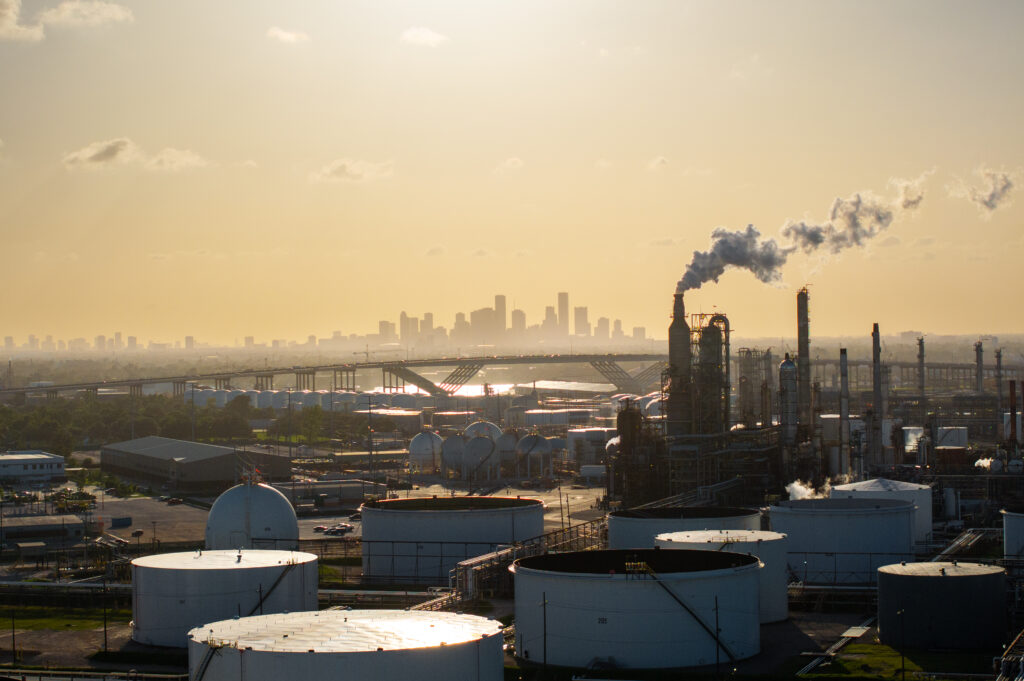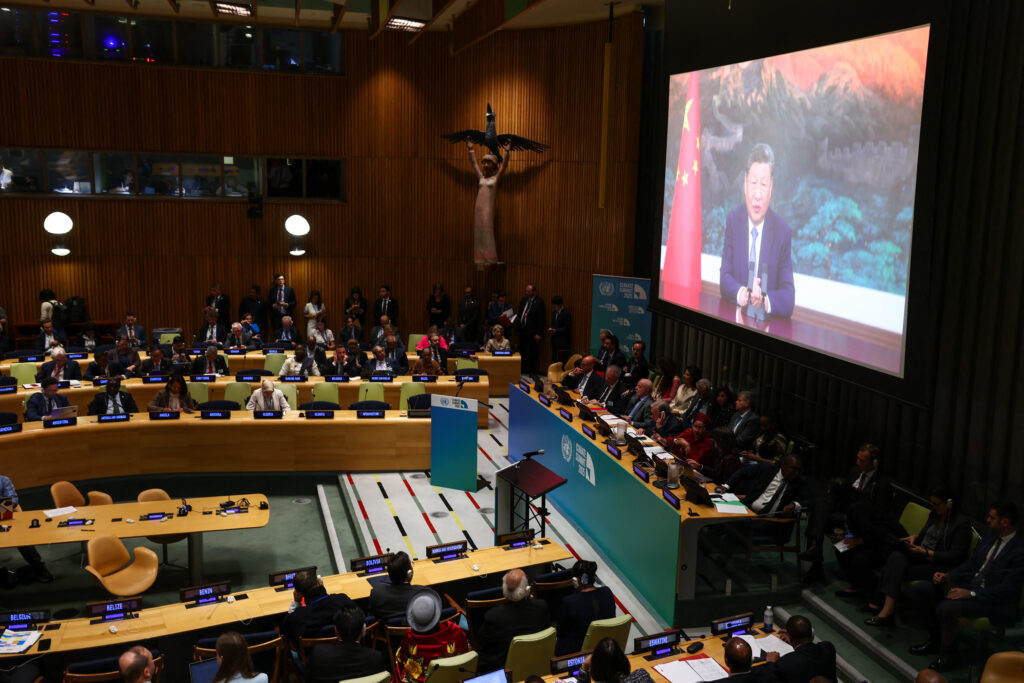DUBAI, United Arab Emirates— As COP28 ended with just a faint glimmer of hope that the world will take seriously the need to decarbonize by 2050, leading scientists at the conference said it’s time to “put the protection and restoration of wild ecosystems at the heart of global climate policy” as a viable option for cutting carbon dioxide pollution.
Nature is humanity’s biggest ally in the struggle to limit global warming. Forests, oceans and fields absorb and store about half the annual heat-trapping carbon dioxide pollution from burning oil and gas and other industrial and agricultural activities. The final COP28 statements prominently emphasized the importance of nature, and not just forests.
A joint COP28 statement on nature, climate and people said there is no path to the goal of limiting warming to 1.5 degrees Celsius “without urgently addressing climate change, biodiversity loss and land degradation together in a coherent, synergetic and holistic manner, in accordance with the best available science.”
The UAE Consensus, approved in the final Dec. 13 plenary, also recognized the importance of conserving and restoring terrestrial and marine ecosystems that “act as sinks and reservoirs of greenhouse gases,” noting that “ecosystem-based approaches, including ocean-based adaptation and resilience measures, as well as in mountain regions, can reduce a range of climate change risks and provide multiple co-benefits.”
It’s not the first time climate and biodiversity have been mentioned in a synergistic way, said John Verdieck, director of international climate policy at The Nature Conservancy.
“But two things are different this year,” he said. “The specific call-out for the Kunming Global Biodiversity Framework, and the biodiversity language is included in the main part of the text, and right after the fossil fuel clause.”
The global biodiversity pact was adopted in January 2023, enshrining human rights and the rights of nature together, with the recognition that conservation efforts must promote the well-being of Indigenous peoples, and that forests, mountains and rivers have rights.
“The carbon capture power of nature has been around for eons,” Verdieck said. “We need every available tool to reduce global greenhouse gas emissions.” Direct air capture of carbon dioxide is currently projected to remove about 1 gigaton of carbon dioxide per year by 2050, while a 2017 study showed that an ecosystem conservation and restoration approach could remove about 24 gigatons of CO2 annually.
Don’t Overlook Animals
At COP28, Bahraini marine biologist Reem Al Mealla said Article 5 of the Paris Agreement is the underpinning for renewed discussion of this topic in Dubai.
“Article 5 is about the role of ecosystems and the importance of conserving and enhancing sinks and reservoirs, but there’s no work programs to discuss,” she said. “There’s no negotiating track at the moment, so what we’d like to see is a recognition that insufficient action has taken place under Article Five.”
The renewed emphasis on nature at COP28 could help direct more focus to Article 5, and one of the things that has been conspicuously absent in the discussions are animals, said Yale professor of ecology Oswald Schmitz, co-author of a 2023 study showing how wildlife conservation can be a key to mitigating climate change.
Animals have, until recently, been missing from the equation because people thought they were not abundant enough to make a difference. “People have ignored animals because they don’t think of them as a useful way of storing additional carbon,” he said. The problem with that thinking is that it ignores biological feedbacks that can be significant in the carbon cycle. When you start to include them in the carbon equation, animals can have “outsized effects than their abundance would suggest.”
That’s been reinforced by research just in the past year, with one paper showing how encouraging larger populations of wolves and beavers in western North America would not only help boost ecosystem carbon storage, but also boost water supplies and protect against both drought and floods. There is also strong evidence that protecting key ocean areas would boost biological carbon pumps that end up storing CO2 as carbon in seafloor sediment, and that restoring seabird populations would do the same thing.
The list goes on: At COP 28, Jimmiel Mandina, with the International Fund for Animal Welfare, said research shows that protecting elephants is also crucial to storing carbon in ecosystems and even sea turtles play a role because their grazing promotes healthy seagrass ecosystems, which plays a huge carbon storage role in oceans, according to IFAW.
Healthy, Biodiverse Ecosystems Are Huge Carbon Sinks
Scientists with IFAW have shown that protecting marine fish, wildebeest, sea otters, sharks, musk oxen, and gray wolves would secure 5.8 gigatons of carbon sequestration per year, or more than 440 gigatons by the end of the century. The restoration of only three types of animals—American bison, baleen whales and African forest elephants—would add another 0.6 gigatons per year, or 40 gigatons by 2100, they calculated.
At a COP28 presentation, Schmitz presented an example from the Arctic, where ecosystems without musk oxen and caribou turn into landscapes that become “lush with shrub vegetation,” he said. “What the vegetation does is absorb solar radiation that warms the soil in spring, so you get earlier spring warming.”
And without ungulates roaming and browsing, the snow stays fluffy and light, and “actually prevents cold air from penetrating through to the soil, to permafrost,” he said. That leads to permafrost thawing and releases of heat-trapping methane, “so these animals actually protect soil carbon in the permafrost,” he said.
One of the best places to capture and store carbon is the ocean. Both deep ocean and coastal ecosystems are important, he said.
“We’ve got mangroves, sea grasses, kelp forests, coral reefs,” he said. “They all contain species interactions that actually control the amount of carbon taken up and stored in sediments in much similar ways.”
This story is funded by readers like you.
Our nonprofit newsroom provides award-winning climate coverage free of charge and advertising. We rely on donations from readers like you to keep going. Please donate now to support our work.
Donate Now
In the deep ocean, the daily vertical migrations of fish are crucial. When they rise near the surface they poop and release nutrients that stimulate plankton production, he explained. The plankton take up CO2 from the atmosphere and when phytoplankton die, they sink to the bottom and take that CO2 with them. And deep ocean fish also release calcite through their saltwater-adapted metabolism. That calcite is a heavy, rocky substance that also sinks to the seafloor for carbon storage, he added.
Andrew Tilker, species conservation coordinator with re: wild, a nonprofit nature restoration organization, said animals are often overlooked for their role in maintaining diverse forests. Everyone knows healthy forests are crucial for carbon storage, but they can’t stay healthy unless there are enough animals.
“Many large and medium-sized mammals and birds feed on fruit,” he said.”Those seeds pass through the animal and then they’re deposited, often very far away from the original location where the seed was consumed. And with a bundle of nutrients wrapped around it, which helps germination. And so by consuming seeds and spreading them out across the forest landscape, these animals are integral to maintaining healthy forest ecosystems.”
He said several studies in recent years in tropical ecosystems have shown that the seeds that are most likely to be consumed and dispersed by large mammals and birds are exactly those of trees that store the most carbon. The studies also show that as large fruit-eating animals decline or go extinct, “the forest composition fundamentally changes, with a shift to softwood trees that store less carbon.”
While the climate benefits of nature are clear, Mxolisi Sibanda, a climate change adviser with the Commonwealth Secretariat based at Cambridge University, said it’s important to remember that people are also part of the equation, especially in the context of social and economic development, as well as food security.
“As we continue to bring the subject of wildlife into the climate discourse, we need to highlight that you can see these interlinkages,” he said. “Most of our countries use wildlife as a basis for their economies. And we need to acknowledge this overlap of biodiversity, climate, food systems. I look forward to discussion of how we can do that so animals are no longer excluded from these discussions.”
















